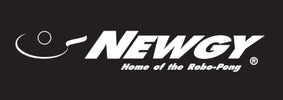THE SHAKEHAND GRIP
While there are many ways to hold a racket, the shakehand grip is the most versatile and universally used of all grips. Therefore, I recommend using it for learning table tennis. If you have not used this grip, it may initially feel awkward. Please persevere, as this grip will permit you to develop all the strokes these articles willdiscuss and illustrate. Other grips may hinder or limit your development.
Lesson 1: Learning the Shakehand Grip
To use this grip, you essentially "Shake hands with the racket." Fit the edge of the blade snugly in the "V" of your hand between your thumb and forefinger. Grip the handle with your middle, ring, and little fingers. Finally, place the forefinger flat on one side of the racket head close to the bottom and the thumb sideways on the other side of the racket head. See Photo 3 and 4.
Hold the racket with just enough tension to keep it in place. Another person should be able to take the racket out of your hand and feel just a slight resistance while you maintain your grip. It is important not to grip too tightly. Too tight of a grip causes excess tension in the arm. The excess tension will, in turn, slow down your strokes and make it harder to adjust the racket angle to compensate for various spins and angles. This is not to say, however, that hand tension is constant, never shanging. Hand tension should increase just before ball contact on a hard hit shot and it may decrease on soft touch shots or serves.
Hold the racket so the edge of the racket is perpendicular to the floorand tilt your wrist slightly down. The wrist should remain in this downward tilt position throughout all your strokes. Do not force this downward tilt, but rather let the racket naturally fall into this position by relaxing the hand muscles. While we're talking about the wrist, do not let the wrist flop back and forth or up and down as you stroke the ball. Letting the wrist flop is one of the most common causes of mis-hit shots.
|
Photo 3: Shakehands Grip, Forehand Side Notice how the side (not the |
 |
|
Photo 4: Shakehands Grip, Backhand Side Notice how the knuckles lay on top |
 |







